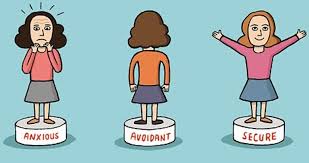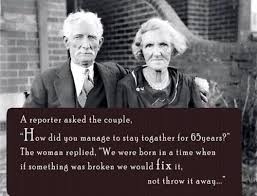|
You know the feeling. Your new dating partner is looking at you with those eyes…THOSE eyes. The eyes that say, “This is it. You’re the one. I’m falling for you.” Your heart starts pounding. Your breathing gets shallow. You feel yourself breaking out into a cold sweat. In that moment, your body tells you there is one answer and only one response to this situation…RUN! If you find yourself repeating this scenario again and again, it’s possible you are suffering from an insecure-avoidant attachment style. It’s estimated that approximately 50 % of the U.S. population struggles with insecure attachment. A smaller percentage struggles with a very specific type of insecure attachment known as insecure-avoidant attachment. If you have insecure-avoidant attachment, you might have difficulty starting and maintaining committed relationships. You are likely to find yourself becoming involved with people who feel overly attached or “clingy.” When you are not in a relationship, you might long to be in one. But as soon as another starts to get close, you feel the urge to run. After you run away, you might find yourself wondering why you left the relationship. You might even return to your partner, only to run away again. You repeat this pattern over and over again. You are not alone. There are many people struggling with insecure-avoidant attachment. If you would like to learn more about your attachment style, click the button below. It connects to an anonymous, psychologically valid online test. Once you know your attachment style, check this site for more information on how to move from an insecure-avoidant attachment style to an earned-secure attachment style. I look forward to helping you find and keep your true love!
1 Comment
The way we connect with other human beings, especially romantic partners, is biologically wired before we are able to talk. This attachment style affects everything from our heart rate, respiration, and stress hormones to the way we perceive the world.
There are two basic attachment styles, "secure" and "insecure." Under the "insecure" style, there are multiple distinct types of insecurity. You might be relieved to know that experts estimate that 50% of all adults have an insecure attachment style. If you feel doomed to repeat the same unhappy relationship patterns over and over again, don't give up! With the right help, anyone can move from an insecure to a secure attachment style. Want to find out your attachment style? We aren't born automatically knowing how to make relationships work. A little knowledge and practice can go a long way! In my work with couples, I often find that many folks never learned the the essentials for a healthy relationship. Does your relationship have these three fundamentals?
ONE - A sense of shared emotional and physical safety. Science shows that bonding circuits can't fire when fear circuits are firing. If you do not feel safe in your relationship, you will not be able to connect with your partner. Safety goes beyond mere physical safety. Does your partner's face have a certain look that makes you hold your breath? In the moment that occurs, your physiology moves into fight or flight. Relationships cannot bear repetitive and prolonged ruptures in emotional and physical safety. Emotional abuse, verbal abuse, physical abuse, gaslighting, emotional volatility, criticism, and dishonesty can cause us to feel unsafe. Establishing safety is an essential component of every healthy relationship. TWO - Conscious communication is another fundamental skill of partners in healthy relationships. We are always communicating with one another, even when we are not talking. Our facial expressions, muscle tone, posture, and breathing are constantly sending signals about our internal states of being. Our interpretations and misinterpretations of these non-verbal forms of communication are often core components of couple conflict. Partners in healthy relationships expend effort to become mindful and aware of their communication and take responsibility for how they are communicating in the relationship. Kind, loving, and authentic communication is a skill that requires education, energy, and practice, but the payoff is well worth it! THREE - Do you ever see couples that have lasted through the most difficult times and wondered how they made it? One of the big secrets of long-lasting relationships is really pretty simple. Put the good stuff in the bank! (The relationship bank, that is.) Each day, do three kind things for your partner. If your partner loves to hear those three little words, say them! If they love it when you bring them coffee in the morning, fire it up! This concept is so simple that people often overlook it, but in the long-run, daily acts of kindness can work wonders to pull a relationship through the hard times. Think of your relationship like a bank account. The kind words and actions you give to your partner are like daily deposits into a sacred savings account. When the tough times come (as they always do) you may need to make a withdrawal. If you and your partner are riding high on a cushy savings account filled with the hundreds of loving words and kind actions you have deposited over the years, the chances of making it through the bad times are much better than if your account is overdrawn. Criticism, dishonesty, and repressed anger take big cash withdrawals out of the relationship bank. If you want your relationship to last through the tough times, start today by doing something kind for your partner. |
AuthorElizabeth Fisher, PhD, LMFT ArchivesCategories |



 RSS Feed
RSS Feed